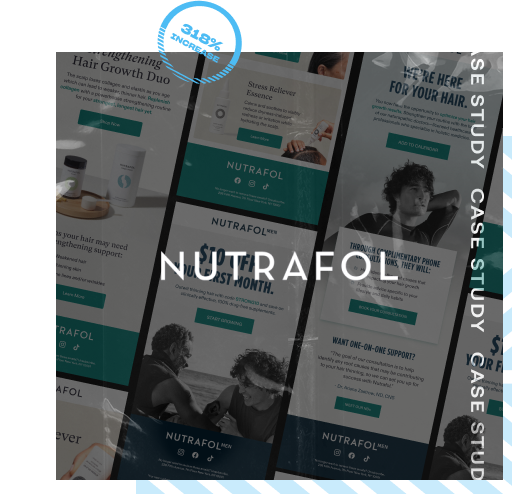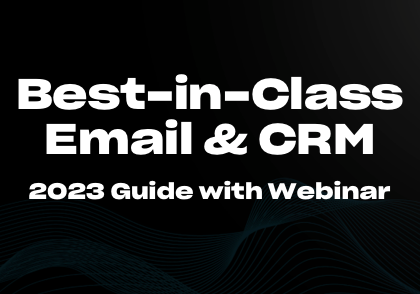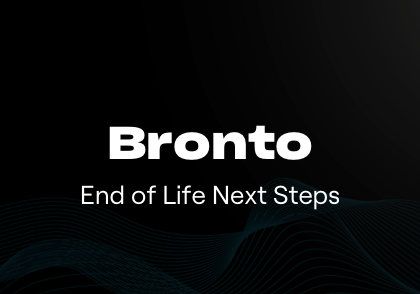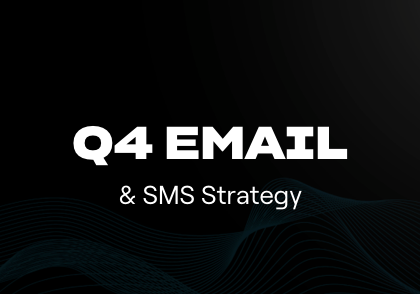In the last two years, as I am sure you are well aware, everything has changed in ecommerce marketing. There is not only continuing increased competition, there is now increased promotional activity by competitors. In addition to these new challenges, the previous ones still exist. iOS 14 and 15 continue to make it more difficult and more expensive to acquire new customers, CAC is still increasing and of course, now inflation. Consumers are behaving differently today, often price shopping and looking for the best deal possible. 70% of consumers have ditched their favorite brands and instead bought from a competitor. The list goes on.
Everything has shifted and yet your strategy remains the same. If you’re still running the same old playbook, it’s not going to win anymore. Your time is running out to shift your strategy. Continuing to only optimize for customer acquisition isn’t going to cut it. It’s not Facebook ads that are broken. It’s your marketing strategy that needs to evolve to be full-funnel. Instead of chasing the next channel and throwing away $100k on TikTok on another test (before it gets banned), go back to the fundamentals: double down on your customers and owned channels.
During the boom times of Facebook ads, Lifecycle & CRM fell to the wayside. To continue to scale in 2023, you need to be aggressive and thoughtful with your CRM and Lifecycle Marketing. For years, brands have spent millions acquiring customers, email addresses, and phone numbers. But CRM and Lifecycle Marketing fell on the back burner and they’re still there today. The brands winning in this era of commerce are leveraging Email and Owned Channels as the foundation of their growth.
CRM & Lifecycle Marketing are untapped for the majority of brands for a few reasons.
First, CRM and Lifecycle channels like email, SMS, and push are extremely high ROI channels. As a result, they can be operated poorly and still generate a lot of revenue. Two days ago I was auditing a well-known brand and they were seeing a third of their ecommerce revenue from email, but they only had 4 total automated emails setup. From a revenue perspective, the program is a top revenue driver. From a strategy perspective, it’s operating on less than 10% of what’s needed to be best-in-class.
Second, CRM is not a core focus for many brands, even if they claim it to be a priority. CRM is typically on the back burner (still), while customer acquisition takes up all the bandwidth, budget, and attention of the team. This makes sense because without new customers, there is no growth. However, a lot of brands do not realize that with CRM dialed-in at 100%, you can grow a lot faster (with lower CAC, higher AOV, higher LTV, etc) and more efficiently. Even today when brands should be focusing more on profitability (a lever that CRM can easily pull), most brands are still trying to solve the problem with paid and “new” by running yet another $100k pilot on TikTok or spending $25k on new landing pages. Don’t get me wrong, these things are important too, but more revenue (and profitability) is hiding in plain sight for brands.
Third, as a result of the previous points, CRM teams are not held accountable. This is partly because results are “fine” or “good” and also because CRM is not a core focus. Most CRM teams are not optimizing. In their defense, they also don’t know how. Many of today’s CRM talent is poached from other brands, but CRM for a desk chair brand is very different from CRM for a haircare brand, for example. They run the playbook that worked on the previous brand, not the playbook that is best for the current brand. It’s also not even entirely their fault, if they are lacking the knowledge and insights as to what could be better, they can’t make recommendations because they don’t know what could be better.
Or the CRM team simply doesn’t exist and email/CRM is on the plate of the Head of Marketing/Ecommerce or maybe even a Graphic Designer. We’ve seen it all, even customer service teams running email/CRM programs. This is why leading brands hire us to work in tandem with their in-house teams, even across departments, to bring insights and strategy that simply does not exist in-house. This is extremely important in today’s marketplace to continue to drive growth.
Your outdated strategy is costing you more than you realize. Mediocre performance will NOT cut it during this time.
By optimizing CRM from your current under-optimized state to its full potential, you immediately increase revenue and profitability within a quarter (or two). This is huge considering there are not many “in quarter” plays that you can run to increase revenue. After working across 100+ brands, we have found that most brands are operating on 30% to 60% of their full potential with CRM.
Most Common, Yet Crucial CRM and Email Marketing Mistakes To Avoid (That Most Brands Make)
Lack of Segmentation.
Stop emailing like it’s 2008. It doesn’t matter if your list is 100k or 5 million, you need to evolve your program beyond batch-and-blast. If you’re emailing or texting too much, you’re going to lose more subscribers than you gain – and email/SMS will become a cost center instead of a revenue driver.
Outdated and Disjointed Automation.
Flows and sequences that have been set up over the course of years, by different teams, for a different customer journey and as a result, the CRM journey is broken and disjointed. You’ve launched new products, evolved your brand, and more since these old sequences have gone live, but your email and SMS marketing automation hasn’t evolved with it. Plus, the definition of “best-in-class” has changed since your outdated flows went live. The reality is your automation is under-optimized, off-brand, and missing out on revenue. Your automation is due for a refresh, to look on-brand again and maximize performance with the latest strategies and tactics.
Some key questions to ask yourself are the following:
- Are your post purchase / retention flows aligned with your latest customer journey? Or have you launched new products since?
- Are your email and SMS marketing automations working together in the most effective way? Lots of brands have launched SMS programs rapidly in the last few years, but how has it affected your email performance? You need to ensure both are strong.
We find that many brands have outdated emails they didn’t even realize were still live, as well as brands with new customer journeys as the result of new learnings, new product launches, etc – yet still the same old flows. This is all costing your revenue and most brands are in for a refresh of their email/SMS marketing automation.
Unoptimized Creative.
Creative alone can increase your email revenue by up to 68% (we’ve done it). Common creative mistakes include creative that doesn’t look as on-brand and stand out as much as other channels (site, ads, billboard, TV). In addition the creative is overly complicated or has too many conflicting messages, which ends up confusing the consumer and reducing conversions.
Another monumental mistake is that the creative is not mobile friendly. Hard to read text and tough to spot CTAs is a shortcoming that applies to brands with “pretty” emails too. Also the fact that lots of email designs are still not dark mode friendly and difficult to read as a result is beyond me. Beyond tactics, many brands lack true strategy behind the creative. You need to stop the scroll. The best brands capture attention immediately and communicate as quickly as possible their message, all above the fold.
Another mistake is assuming the customer knows everything, but they don’t. Education is a key part of great creative. Lean into education more instead of promotion. There is also a major lack of creative copywriting. Creative is more than just design and we’ve seen incredible results when utilizing good copy. The formula is not just how the creative looks (which is also very important), but what it says and how you say it matters to increase conversion.
Pro Tip: The UX of your Email Creative must also be optimized for the current inbox. User Experience Design of Email is a topic that I don’t see talked about much, but should be talked about more. More on this topic in the above webinar replay for you to watch.
Lack of Personalization.
In an increasingly competitive marketplace and inbox, brands must personalize to get more 1:1. Most brands talk about delivering personalized experiences, more than they actually personalize.
Not Testing and Optimizing.
Most brands have no real testing or optimization strategy that compounds growth over time. You likely have years of insights from tests run by different teams that aren’t being used today to move the business forward.
This applies to reporting too. We’ve seen reporting range from nothing to complex Tableau dashboards to random spreadsheets. For Wavebreak clients, we bring this into a simplified dashboard to pull insights and make recommendations for driving further growth, all in a way that is easy for anyone to understand and digest.
Overall Lack of Bandwidth.
Lots of CRM teams are stretched too thin. That’s if there is even a CRM team to begin with and the responsibility isn’t just falling on a sole CRM Lead or even the Head of Ecommerce themself. Limited resources leads to lower quality, slow turnaround times, increased errors, and lack of long-term strategy. When your team is rushing last-minute to get out the next send, it’s hard to be strategic and think about the big picture. Lack of bandwidth hurts your revenue from CRM/Lifecycle in a big way.
The Future of CRM and Lifecycle Marketing: Lifecycle 2.0
Our methodology solves this for brands by up-leveling them to: Lifecycle 2.0. It is the modern strategy for brands to maximize revenue from CRM and Lifecycle Marketing. Our holistic approach optimizes your program in as little as 90 days.
Phase 1 as we like to call it is when we Refactor Your Automation. Wavebreak refreshes and refactors your flows across email and SMS optimizing them for today’s best practices delivering personalized experiences to consumers and increased incremental revenue to the brand.This also includes finding the optimal customer journey to maximize retention.
Phase 2 focuses on Scaling Your Segmentation. Finding the optimal strategy and frequency for each audience to maximize engagement and revenue while delivering more personalized content, so you can increase conversion without discounts.
Phase 3 is when we Test and Optimize. Wavebreak continues to optimize with data-driven strategy and reporting, building on top of each win and improvement testing campaigns across segments, send times, frequency, volume, creative and testing automation by testing and optimizing subject lines, creative, offers, and more.
Each phase must be executed in tandem with best-in-class:
Strategy: Each automation, each email/SMS within it, and each segment must have the right strategy.
Creative*: This is starred because it’s incredibly important and can improve performance up to 68% alone as previously mentioned. Not just how good it looks, but how it delivers the right message to maximize conversion and engagement
Personalization: Personalization must be baked into every aspect of your program as you rebuild and optimize it. 1:1 or as close as you can get to it, will increase your conversions and make your customers love you more.
Data Analysis: Your future strategy should be built based on your existing data, you should not be starting from scratch. Every improvement to your program should be based on data.
Reporting: Lots of brands have various means of reporting from advanced Tableau dashboards to spreadsheets. We create a simple dashboard that anyone can look at and understand, then use it to extract insights that drive future growth across the entire business.
Real Results — Nutrafol: 318% YoY Increase in Revenue from Email & CRM
We helped Nutrafol execute this exact strategy leading up to their acquisition by Unilever and continue to optimize the program with them to this day.

- Refactored Automation.
We refreshed their creative to align with their new branding while up-leveling their strategy to the latest best practices.
- Scaled Segmentation.
We tested to find the optimal frequency for each part of the customer journey and customer type.
- Testing and Optimization to unlock further growth.
We continued to test and optimize flows and campaigns to find the content that converts best.
The Result: 318% YoY growth within 120 days and continued growth since.
This is a proven approach that we’ve tested and refined 100+ leading brands across every industry: Enterprise – Ecommerce – Challengers – B2B – Consumer – Alcohol.
Scale your CRM & Lifecycle program with ease. Partner with Wavebreak.
As the leading CRM & Lifecycle Marketing agency, we scale email and SMS programs using advanced segmentation and creative. We’re ESP and software agnostic.
By limiting the number of clients we work with, as a boutique agency, we’re able to operate as an extension of your team to give your brand the time and attention it needs in this market.
With our full-service email & CRM agency capabilities, we support your team with additional resources from strategy to creative to development to execution.
Click here to schedule a call with Takara Sewitt, our VP of Growth, to learn more about partnering with Wavebreak to scale your CRM program with confidence.
During a recession, every $1 counts. If your current program is leaving 40% additional revenue on the table, you need to fix this gap immediately.
It’s not just a boost in additional revenue, it’s revenue you are currently losing and this is becoming even more crucial during this time of economic instability.




